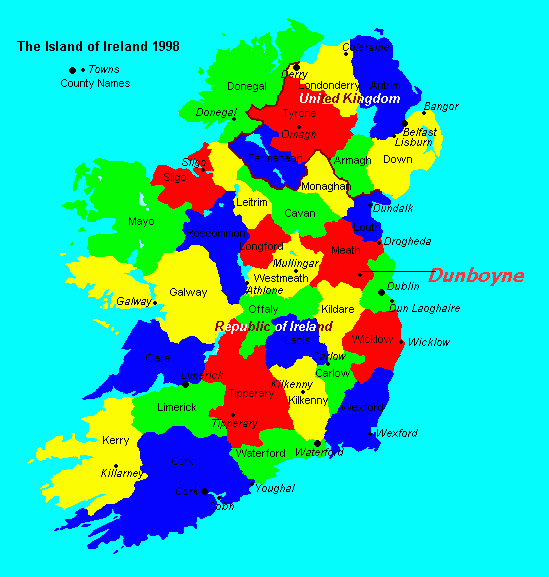Location of Dunboyne in Ireland

Dunboyne is a village of approximatly 5,000 people located in south east Co. Meath, within very close proximity to Dublin, the capital city of Ireland. It is a rapidly growing village with a large young population.
Dunboyne gives its name to a barony, a village and a townland. Prior to the arrival of the Anglo-Normans, the predominant clan was O'Ceallaigh. Dunboyne appears in the Annals of the Four Masters as Dun Buinne (1306 A.D.). The meaning of the word Dunboyne is fortress of (or on) the flood or stream, according to Joyce. Cogan suggests that the word means fort or dun on the Yellow River. Yet another explanation exists. Dunboyne may, in fact, be Domhnach Baoithin -The Church of St. Baoithin, according to Donnchadh O'Meachair.
St. Baoithin was a distinguished scribe, near relative and very close companion of Saint Colmcille. Both Colmcille and Baoithin had head houses: Colmcille in Derry and Baoithin in Taghboyne (Teach Baoithin) Donegal. Baoithin took over the monastery at Iona on Colmcille's death.
Colmcille has very strong Meath connections. He is associated with the monastery in Kells and gave his name to the Book of Kells: the Great Gospel of Colmcille. Furthermore, Skryne is called Scrin Cholmcille. Since Colmcille and Baoithin were such close companions, the possibility exists that Baoithin had more than a passing association with the county. In fact, he may well have founded a monastery in Dunboyne, which was called Domhnach Baoithin.
St. Baoithin died in 595 A.D., according to the Annals of the Four Masters. The placename of Dunboyne remind us that the Irish language was the prevailing tongue of our ancestors.
|
Dunboyne Combined Residents Association
Home - About DCRA - Contact DCRA -Archive - News- Politicians Directory - Planning - Environment - Links Page - Newsletters - DCRA Meetings - Soapbox - Waste & Recycling
WHERE IS DUNBOYNE
|
|
|
Location of Dunboyne in Ireland |
|
Send
mail to DCRAMail@netscape.net
with questions or comments about this web site.
|